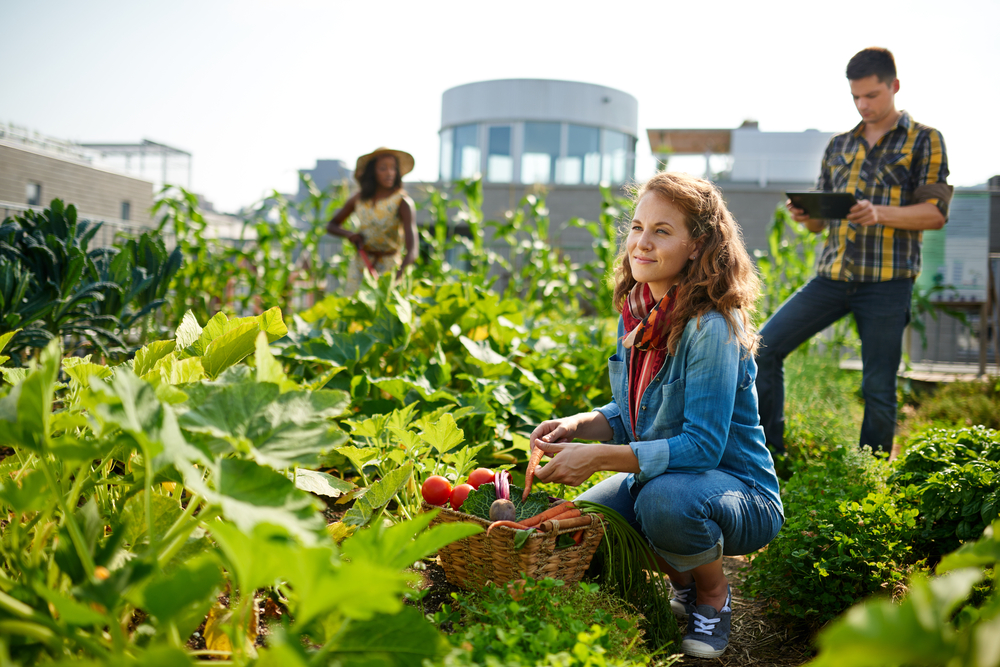Share This
Related Posts
Tags
Community Gardens
By Erica Rascón on Jun 13, 2016 in News
As a gardener, I took personal interest in the community gardens popping up throughout the US. I expected to find plenty of resources on the practicality and returns on such projects. Unfortunately, I had no such luck. What I’ve found, though, may help you determine if a community garden is a worthwhile addition to your multif amily property.
amily property.
We can begin with the question that is likely in the forefront of your mind, “What will it cost me?” That answer depends on several factors.
Primarily, the costs of the garden depends on its size and the materials used. Rot- and pest- resistant cedar wood will cost more than pressure treated wood, for example. When using local, recycled wood, you may just pay for transportation.
Then your costs will vary based upon how the apartment garden is established. In most cases, the site is responsible for the installation. The site furnishes irrigation, a few tools, and perhaps the first season of plants (since an active garden is an easier sell than bare earth). With greater involvement, the costs increase to accommodate maintenance of the site, perhaps a part-time gardener or additional time on the clock for maintenance techs.
The potential returns also depend on whether or not residents pay a fee for using plots, or whether they are offered without charge.
With those factors in mind, it is impossible to pinpoint the exact costs and returns for a community garden. But the following information may give you a ballpark idea of a garden’s value.
“We’ve had our community garden for several years now,” says Vanessa Jackson, Leasing Consultant at Greystone Farms Apartments in Columbus, GA. “Honestly, most people don’t come in asking about it. But once we drive them around the property and we point it out to them, some people—no particular demographic, it just depends on the person—some people get really excited about it.”
Resident response has been excellent. Last season, all of the available plots were reserved well in advance of the planting season. This year, reservations are already coming in.
Greystone Farms limits two plots per household at the community garden, each plot measuring about three feet wide by five feet long.
The managers provide irrigation and a few basic tools. Community maintenance techs also upkeep of the garden structure. “They go out there every once and a while but the cost is pretty minimal,” says Jackson.
The rest is up to the residents. “They can plant whatever they want. Vegetables, flowers, it’s up to them,” says Jackson.
Since minor changes, additions, and repairs have been made to the site overtime, Jackson is unsure of the exact costs.
The National Gardening Association (NGA) may help to quantify the results of household gardens. NGA estimates that the average gardening household receives a $530 return per $70 invested into their garden. As food prices continue to rise and drought plagues many farmlands of the US, the return is expected to triple in coming years.
As owner or operator, you won’t see the dollar amounts of those returns since you don’t eat the yield of the land. But you can benefit from the garden in other ways.
In the study, “The Impact of Home and Community Gardening in America” NGA reports that more than 30 percent of U.S. households participate in some form of home gardening. That’s 30 percent of households that would be more interested in your property with a community garden than a comparable property without one.
Community gardens can also improve curb appeal and your residents’ sense of satisfaction with the property. Horticulture as Human Therapy explains how gardening can revitalize neighborhoods, reduce vandalism, and create a sense of neighborliness. It accomplishes those results by helping residents develop a sense of pride in their community and improving residents’ self-esteem.
Some prospects will also appreciate that a neighborhood garden cuts down on the rising cost of groceries. The United States Department of Agriculture Economic Research Service predicts that supermarket prices will rise 1.5-2.5 percent by this time next year. Saving on food costs may be especially relevant for singles and couples. Those groups can realistically supplement their groceries with the plot sizes available in most apartment gardens.
A community garden comes with built-in marketability: it’s an aesthetically pleasing hub for social interaction. It provides therapeutic benefits and potential cost savings for residents. And perhaps most importantly, it appeals to 30 percent of American households, which can help you fill vacancies.
Interested in starting a community garden? Check out the guide, “10 Steps to Starting a Community Garden.” Create an accessible garden so that all prospects can see themselves reaping the benefits of this multifunctional selling point.
